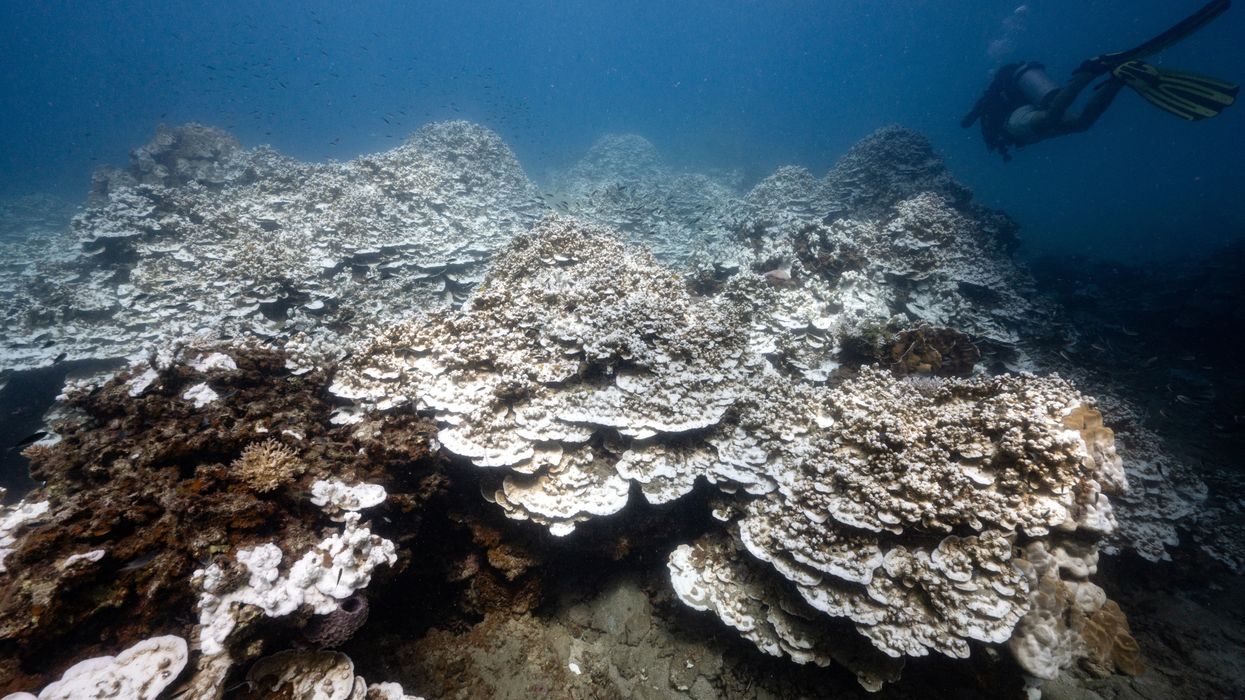Giving Thanks on an Endangered Earth
So many of us are now searching for a bridge to the world we need. I’m thankful that we’re searching together and for the possibilities we may find.
The days grow dark here in the North as the year winds down. Friends slowly return from COP30 in Brazil, the frontline of the fight for our climate future, with far too little won. There’s a weight to the air. It’s an age of global polycrisis, an era of authoritarian upsurge, a time of anger, grief, and overwhelm, nesting dolls of troubled times, from the planetary to the personal. And in the US, it’s Thanksgiving, a time when we are meant to gather to show gratitude for the things we’ve been given.
It’s a complicated proposition, giving thanks; it has always looked very different depending on who and where you are in this country. Because what have we been given and by whom? What have we taken and from whom? What is being taken today and who are the takers?
And it grows more complicated each year, giving thanks, as so many of us whose lives are materially abundant increasingly see that abundance less as a blessing and more as our birthright and a legacy to maintain. When in reality, modern materialist lifestyles were always the brittle pretense of an era of extraction that is hollowing out the Earth and our space to be safe upon it—and is starting to crack.
And this year, with cracks appearing everywhere—in our climate, our politics, our communities, our bodies and minds, our very sense of reality—it is profoundly complicated, giving thanks. This era of capitalist extraction and detached materialism has belched up such historic, geopolitical hairballs as Donald Trump presiding over the world’s richest nation for a second time and promptly pulling us out of the Paris Climate Agreement; such inexcusable own goals as global carbon emissions hitting a new record high in 2025; and such multigenerational tragedies as the vital, life-supporting 1.5°C climate target being all but certified dead. (We can overshoot and return to 1.5°C but we’re making this task harder.)
No one knows where this is going—why can’t it be somewhere beautiful?
This follows a decade of urgent talk about the all-important “2030 deadline” for deeply reducing emissions to achieve this target—“we have just 10 years to avoid catastrophic climate change”, wait, “just 5 years”, wait… This was a message that children around the world picked up and shouted, demanding to be heard. But this year, the adults have gone quiet. The deadline will be missed.
So, it’s a complicated thanks. If I consider what really matters to me, each of those things is under some kind of assault. And my thanks is suffused with grief and anger.
But gratitude is powerful. It’s both something we offer up and, when we mean it, it’s a gift we give ourselves that can help us to hold grief, move anger, and bring us into right relation with what is.
So here are things I’m thankful for.
I’m thankful for the food that will be on the table. I’m thankful for the hands that harvested it. I’m thankful for everyday people in cities across the nation, defending our immigrant friends and neighbors from this administration’s inhumanity.
I’m thankful for the defenders of science, justice, and truth, the people who work tirelessly to ensure these pillars of a free and fair society outlast this authoritarian spasm.
I’m thankful for the creators—the ones making the music, writing the words, conjuring the new and unexpected art forms, and drawing forth visions of the possible that can see us through this dark time.
I’m thankful for the elders. Not the arrested-development adolescents wandering the halls of power in old people’s bodies. True elders, people with the wisdom the world so badly needs. May we listen; may we become one ourselves.
I’m thankful for the dreams of young people that spring eternal, with each new generation, and renew the world’s purpose: to let them thrive.
I’m thankful for the beauty of nature. I’ll grieve coral reefs the rest of my days, but I saw them; I witnessed that wonder of creation and I’m grateful. And though I long for a time when witnessing nature’s beauty was simply about awe, not grief, I wasn’t born then. Learning to hold grief and wonder together not only spares us from emotionally shutting down but can open a deep well of strength and equanimity.
I’m thankful for the resilient living Earth. I’m thankful for all that she has absorbed of our foolishness: the consumption, the fossil-fuel pollution, the bottomless corporate greed—she has spared us the true cost of it all. But now the atmosphere is trapping ever more heat; the oceans break out in fevers; the land endures the drought, floods, and fires of its more violent climate. Ecosystems collapse, people suffer, animals are made extinct. This is the Earth seeking new equilibrium; this is the future; we will be less shielded from the consequences of our choices. And yet… the Earth adapts and, if given a chance, life will always seek to thrive.
I’m thankful for the people who, their lifeways tied to the Earth, continue to stand against the madness and for right relations with nature and each other. Around the world, Indigenous people who have suffered immeasurably in these centuries of colonial extraction, but endured, are raising voices and showing ways forward, including at COP30 in Brazil. They’ve been offering wisdom we should have heeded, just as the Mayflower colonists should have heeded, but it’s not too late.
I’m thankful for those cracks, the ones that seem to be appearing everywhere. Bayo Akomolafe says, “The crack is the monster’s gift,” a weakness in the wall, an opening on which to pry. Vanessa Machado de Oliveira invites us to use these openings to “hospice modernity,” to gently deconstruct the sources of destruction, and to grow in their place the world the world needs. More than I can ever recall, so many people seem to sense that world, waiting to be grown; are planting seeds and tending; are questioning what we as humans really need to live rich lives and creating community that can meet those needs. So many of us are now searching for a bridge to the world we need. I’m thankful that we’re searching together and for the possibilities we may find. No one knows where this is going—why can’t it be somewhere beautiful?
And I’m thankful for our capable, willing hands, yours and mine. We’re going to need to pry at the cracks and plant for tomorrow, together. We’re going to need to raise defiant fists and hold out compassionate palms. And we’re all going to need to hold hands as we meet what comes. I wish I had simpler things to tell my children about this moment, I wish giving thanks was simpler. But they are teens and young adults now and their time here will not be simple, so I tell them the truth: Some things are lost. A lot can be saved. I won’t see the world we’re trying to reach. I hope you will. All we can do today is build a bridge to that world. All we can do is hold hands tightly and be the bridge.
Happy Thanksgiving.


